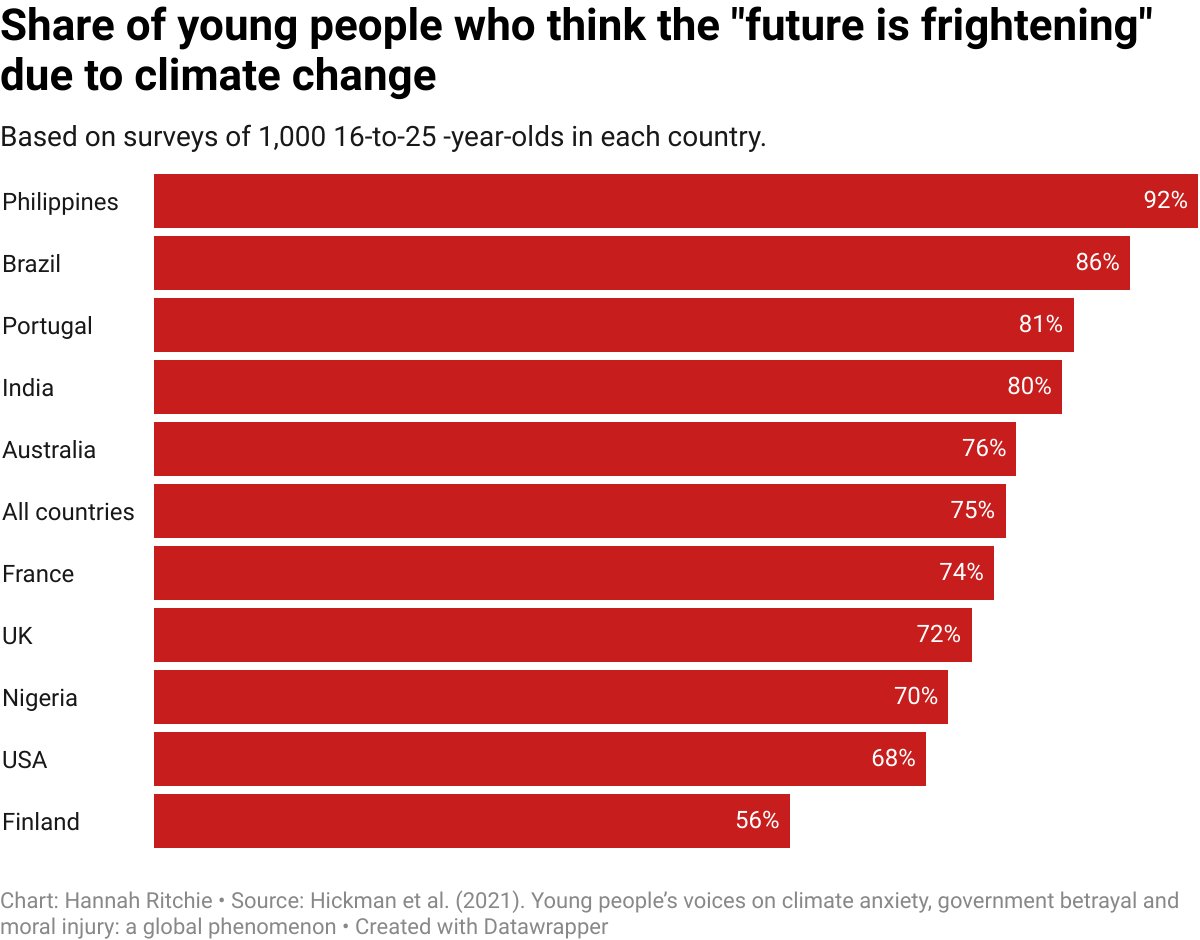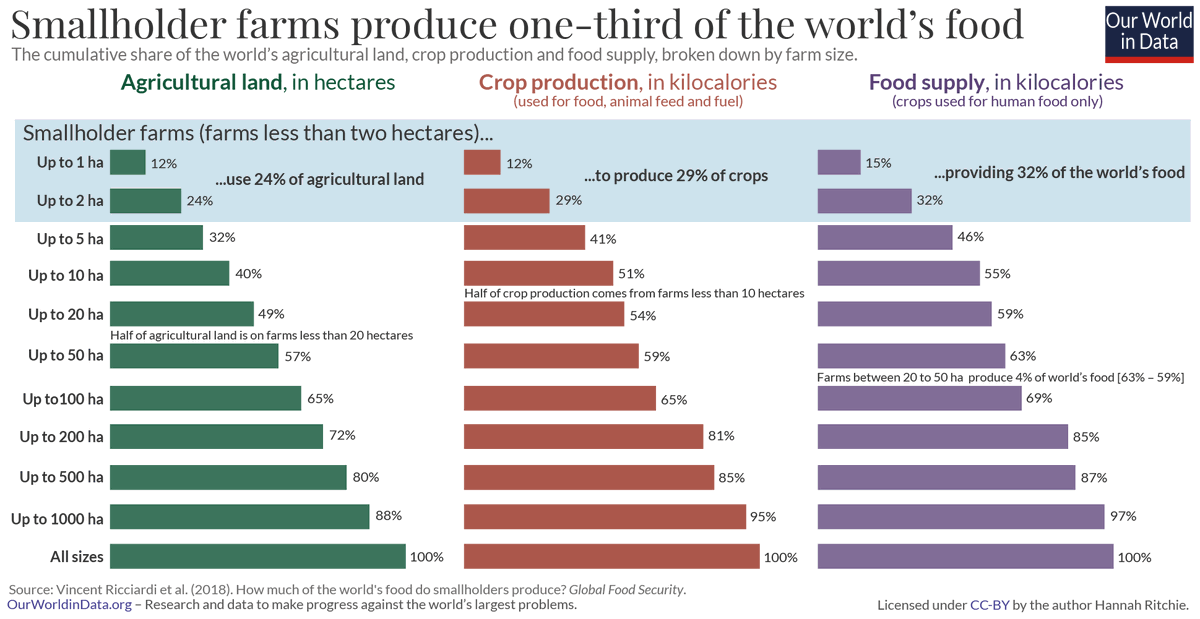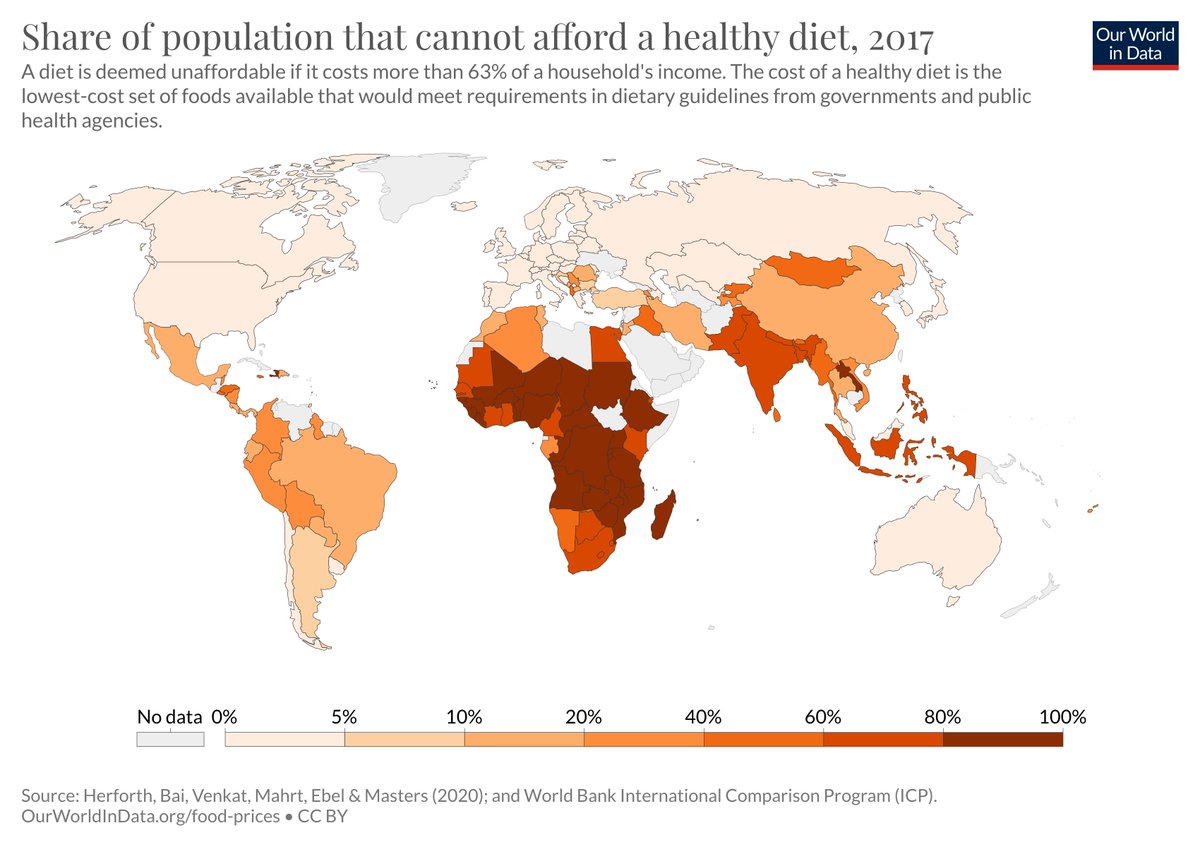
It's common to think that:
– middle-income countries only have high CO₂ emissions because they're making stuff for rich countries
– rich countries have only managed to reduce CO₂ because they're exporting emissions elsewhere
🧵with data on how we can test these assumptions
– middle-income countries only have high CO₂ emissions because they're making stuff for rich countries
– rich countries have only managed to reduce CO₂ because they're exporting emissions elsewhere
🧵with data on how we can test these assumptions

The @gcarbonproject publish annual estimates of consumption-based emissions. These adjust for emissions embedded in the making of traded goods.
We present all of this on @OurWorldInData here: ourworldindata.org/co2-emissions#…
Map shows:
– Net exporters (blue)
– Net importers (red)
1/
We present all of this on @OurWorldInData here: ourworldindata.org/co2-emissions#…
Map shows:
– Net exporters (blue)
– Net importers (red)
1/

This confirms what most of us would expect.
Most countries in 'West' import emissions. Rather than making goods themselves (and dealing with those emissions), they import from other countries.
Most countries in the 'East' export emissions. They produce goods for others
2/
Most countries in 'West' import emissions. Rather than making goods themselves (and dealing with those emissions), they import from other countries.
Most countries in the 'East' export emissions. They produce goods for others
2/

But extent of this varies a lot.
This shows traded emissions as a % of a country's domestic emissions.
Positive = net importers
Negative = net exporters
e.g. China's net exported emissions are 10% of its domestic emissions.
UK's net imports are 42% of its domestic
3/
This shows traded emissions as a % of a country's domestic emissions.
Positive = net importers
Negative = net exporters
e.g. China's net exported emissions are 10% of its domestic emissions.
UK's net imports are 42% of its domestic
3/

This means is that UK's 'consumption-based' emissions are 42% higher than production-based.
For net exporters, like China, it's the opposite. Production-based emissions are 10% higher than consumption-based.
Data for other countries here: ourworldindata.org/grapher/produc…
4/

For net exporters, like China, it's the opposite. Production-based emissions are 10% higher than consumption-based.
Data for other countries here: ourworldindata.org/grapher/produc…
4/


I think many assume that some countries – like China – only have growing per capita emissions because they're producing goods for everyone else.
This was more true in the past than it is today. It used to have net exports of 20-25%. This is falling and is now "only" 10%
5/
This was more true in the past than it is today. It used to have net exports of 20-25%. This is falling and is now "only" 10%
5/

Middle-income countries have moderate emissions because their citizens now have higher standards of living (which require energy). They're no longer serving the rest of the world.
Here is per capita CO₂ adjusted for trade. China sits in middle.
bit.ly/3nLo0Yw
6/
Here is per capita CO₂ adjusted for trade. China sits in middle.
bit.ly/3nLo0Yw
6/

Are rich countries *only* reducing emissions by exporting them elsewhere?
Yes & no
In UK, reductions less impressive with consumption-based emissions (-19% since 1990, rather than -37%)
But *are* falling by both measures
Data for other countries 👉🏼 bit.ly/3EsQAom
7/
Yes & no
In UK, reductions less impressive with consumption-based emissions (-19% since 1990, rather than -37%)
But *are* falling by both measures
Data for other countries 👉🏼 bit.ly/3EsQAom
7/

Many countries have been able to increase GDP while reducing emissions. And this is not just because they're offloading emissions elsewhere. It also applies to consumption-based emissions which adjust for this.
ourworldindata.org/grapher/co2-em…
8/
ourworldindata.org/grapher/co2-em…
8/

Overall, a lot of the narrative on CO₂ exports & imports is outdated
➜ West imports; East exports
➜ Less than people assume
➜ Trade isn't what's solely determining differences in CO₂ across the world
➜ Rich countries not only reducing CO₂ by offloading it elsewhere
9/
➜ West imports; East exports
➜ Less than people assume
➜ Trade isn't what's solely determining differences in CO₂ across the world
➜ Rich countries not only reducing CO₂ by offloading it elsewhere
9/
Thanks to @gcarbonproject for providing data that helps us untangle these questions.
At @OurWorldInData we did further number-crunching to make it all accessible. You can explore this data for different countries via our interactive charts here: ourworldindata.org/co2-emissions#…
/end
At @OurWorldInData we did further number-crunching to make it all accessible. You can explore this data for different countries via our interactive charts here: ourworldindata.org/co2-emissions#…
/end
• • •
Missing some Tweet in this thread? You can try to
force a refresh














